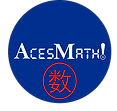Approaching the IB Maths IA
- loocheewee84

- Jul 17, 2023
- 4 min read
How to Find a Maths IA Topic
Even to the most passionate of Maths students, the IB Math IA can pose an intimidating task. We know that writing over 10 pages of an original mathematical exploration sounds like a massive challenge, but scoring well on the IA is an excellent way to give yourself a wider margin for error in the actual exams and secure that 7! In this blog post, we break down the basics of how to approach the IA and include some examples of our previous students’ IA topics.
What do I Write About?
Finding the idea to base your IA on is arguably one of the hardest steps in the writing process – so start early!
The IB wants you to apply mathematics, which can often seem highly abstract at HL, to a real life context. Throughout the process of finding a topic and writing the IA, it is important to continually connect the maths back to real life to demonstrate its practical applications.
We encourage you to not fixate on exactly what mathematical concepts you’re going to explore when looking for a topic. Students often become attached to a certain mathematical idea and then struggle to fit it into a real life situation. In fact, the most successful IAs are generally not the most mathematically complicated/advanced – they can be simple ideas as long as they are well-connected to real life situations.
So, where can I find these ideas? Really they can come from anywhere but here are a few suggestions.
Your Other IB Subjects
This is the most obvious answer in order to provide a personal connection to your exploration. It will be fairly straightforward for students taking HL subjects like Physics and Economics to find real life situations which already involve maths. However, don’t feel limited to just STEM subjects! Subjects like Music and Literature might not seem like obvious choices, but they can become unique explorations e.g. modelling sound waves and assembling harmonies, or using statistics to measure the publishing success of different authors.
Hobbies
Don’t limit your search to academic subjects! Sports can be an excellent basis for an IA because of the wealth of statistics out there. For instance, an avid tennis player might use graphing software to model the arc of different tennis shots. Our students have also seen success basing their IAs on more niche hobbies like exploring the maths behind digital animation.
Start Watching More Math-Focused Content
Social media and especially educational youtube videos can be a great way to find inspiration if you’re really stuck on choosing a topic. We recommend checking out channels like 3blue1brown and numberphile.
Understand the Rubric
Knowing what the IB markers are looking for is the key to scoring well. Luckily, the rubric is readily available, and throughout the writing process, you should keep referring back to it to ensure that your IA satisfies its requirements.
We’ll briefly cover the different criteria and some simple tips to make sure you check all the boxes.
Criterion A: Communication
This criterion assesses if your IA is organised and easy to follow. The basic IA structure must have an introduction, rationale, aim, investigation, conclusion, and bibliography. Including a contents page with appropriate headings and sub-headings will allow your marker to follow your exploration logically. Some students who are using large data sets may also include an appendix at the end of the IA.
Criterion B: Mathematical Presentation
This criterion assesses your ability to use mathematical language, define key terms, and visually represent the maths you are discussing.
Firstly, we advise that you work in Microsoft Word because it is more compatible with writing symbols and equations (even so, you might want to download separate software to write long equations). Do not use google docs as the formatting for equations is messy and confusing.
Secondly, we suggest at the beginning of each section/sub-section in your IA, you define the relevant mathematical terms. To make it even clearer to the markers, you might choose to write all of your definitions in a consistent font/text box.
Thirdly, you will need to include some visual representations of the stages in your investigation. This could be a table, 2D graph, 3D graph, graphs projected onto real life images, etc. The purpose of this is to enhance mathematical communication. We suggest using software like excel sheets and desmos.
Criterion C: Personal Engagement
This criterion assesses the extent to which your IA is unique – both in terms of choosing a topic that is personally relevant and applying the maths in a creative way. But don’t overthink it; you can
quickly satisfy this criterion in the introduction and conclusion of your IA by briefly explaining why you chose the topic (e.g. doing animation as a hobby and stumbling across a youtube video explaining the maths behind it), and then in the conclusion reiterating how your explanation has changed the way you view the topic.
Criterion D: Reflection
This criterion assesses how the student reviews, analyses and evaluates the exploration. This means that you should not just explain the mathematical steps you’re taking, but also write about their significance and limitations. Most students will only address this criterion in the conclusion of the IA, but the strongest students will do it throughout. A simple way to tick off this box is to include one or two ‘limitations’ in the body of your IA and explain how you might address them; for instance, not having access to a large enough data set, or not having sufficiently sophisticated graphing software. This need not be extensive and can be a small paragraph/few lines at the end of a section.
We hope this helped demystify the IA for you!
.png)



Comments